Democratising your data with a CDP

What is a Customer Data Platform?
In a single sentence - it's a platform designed for marketers to centralise and standardise all types of customer data sets and interactions, to then use AI/ML or rule-based segmentation to personalise the omni-channel experience at a user level, in near real-time, for maximum engagement and ROI.
There’s a lot packed into that sentence, and if I were to ask you “Did that make sense?”, I wouldn’t blame you if your answer was “Yes and no”. In this article, I’d like to break things down into digestible bites and help you understand what a CDP is, how it can help your business, and help that proverbial ‘CDP penny’ drop, as I’m sure it’s sometimes tricky to navigate through all these concepts and use cases.
The first component – Data collection
A lot of marketers say they only have data from a few of their channels connected, some say they don’t have any. The initial problem CDPs are trying to solve is the bridging of these data siloes that inevitably pop up in any business. Imagine certain scenarios - what if a lot of your high value customers are coming in from a particular channel, site, or campaign but a fair portion are dropping off at a certain point in your journey? What if a particular high-volume publisher is getting you lots of conversions but generating low-value customers? What if you can test ways to nurture medium value customers and turn them into high value customers and automate the entire process? The answer to these questions are sat in isolated systems within your broader tech stack and a CDP can help shine a light on those blind spots.
Here’s an example view of which data sets a CDP can consolidate for you (this list is non-exhaustive).
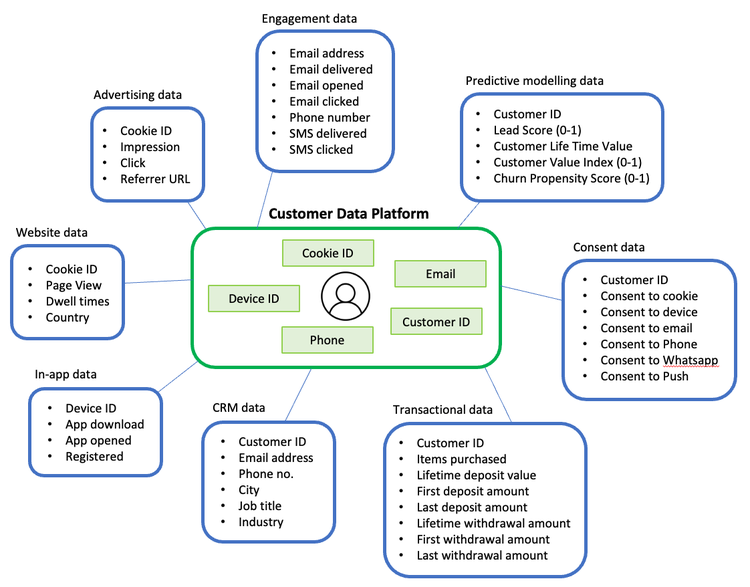
It’s worth mentioning that you don’t need all these data sources to get the most out of a CDP, this is just a ‘sample menu’ to get those ideas flowing. Who knows, there may be two disparate data points sitting in two of your systems that once connected, unlocks a use case that makes all the difference.
The second component – Identity management
When you go through the design & implementation phase of a CDP, you’ll have to identify your primary identifiers, typically an email address, phone number, customer ID, and also a common identifier, which serves as your key to connect any data sets into your unified profiles within the CDP.
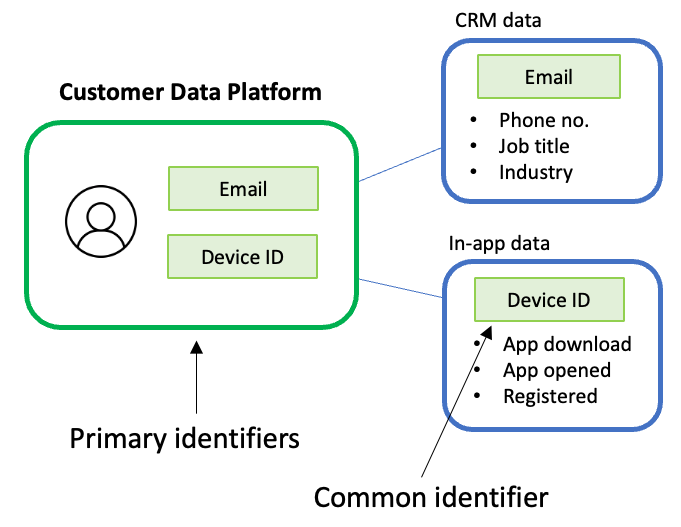
And this is when a CDP project can get really exciting. Once you’ve mapped all of your data sets together, you can create segments based on which ads they clicked on, which email they opened, whether they are high/medium/low value customers, how much they deposited, which page they visited before they converted… You’re connecting datasets together that you’ve never connected before, so in turn, you’re able to create audiences that you’ve never created before. It opens up a whole new category of use cases for you.
The third component – Activating your data
Another useful feature CDP vendors offers are the pre-built connectors/destinations they have. Once you’ve decided on your use cases and built corresponding audiences/journey, you can seamlessly push this data into your destinations and get business value out of your CDP quickly. Different vendors have different strengths, such as data source/destination gallery for streamlined navigation, dashboards for customer journey analytics, data science features for intelligent audience creation, marketer focused AI/ML capabilities (to name a few), so we can help to find the most compatible CDP for you.
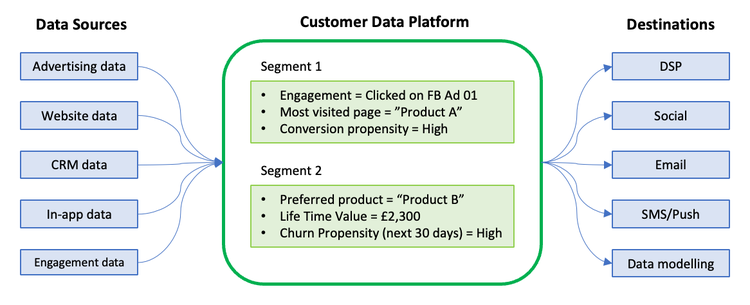
The key to remember is that there is a blueprint to follow, a wireframe that lets you decide your macro-strategy but also compartmentalises the discussions so you can focus on your micro-strategy. This approach lets you keep your world small and hone in on what can you actually improve for every touch point for every stage, and ultimately find those marginal gains throughout the end-to-end experience.
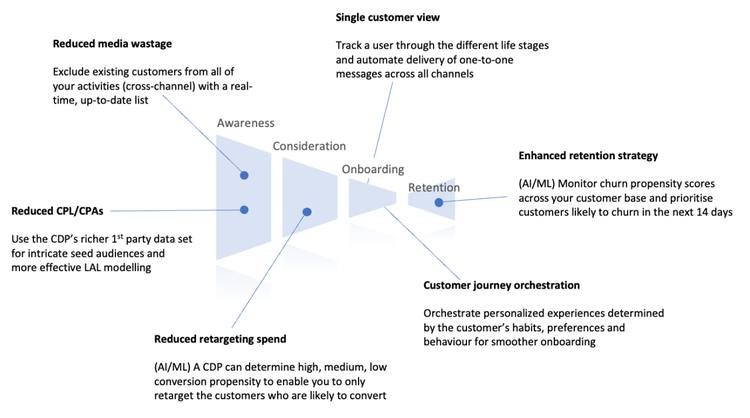
Remember once you implement these pipelines, workflows and use cases, the CDP quickly gains traction in terms of improving its own performance. It will re-cycle the data you’ve uploaded to continually improve its own AI models, it will show you which channels, journeys, creatives are working/not working, and it will help you move into a more systematic test & learn cycle that over time, becomes more and more effective at fine-tuning itself.
The fourth component – Your marketing data strategy
There’s more depth to this conversation but hopefully this gives you some food for thought. There’s a mathematical term called the ‘combinatorial explosion’ where the no. of permutations of possible use cases increases exponentially as you add more data sources, destinations, channels, countries, product interests, life stages…
But that’s where Comwrap Reply can help. With ideation sessions and solution design workshops, we can help guide you through a top-down approach (what are your key objectives?) and a bottom-up approach (what data points and data sources do you have?) and meet in the middle to flesh out some low-cost maximum-output use cases to get you quick ROI.
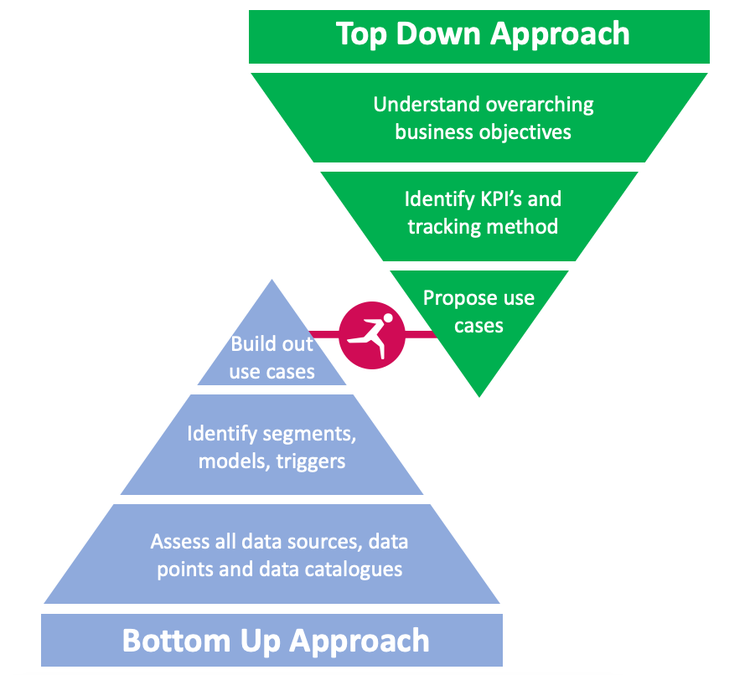
Photo: Joshua Rawson-Harris on Unsplash